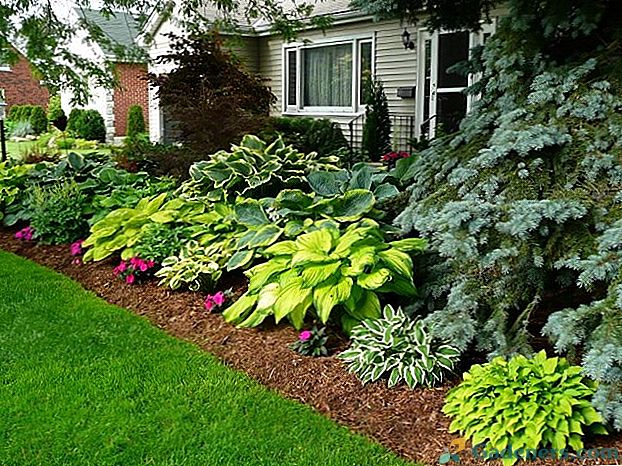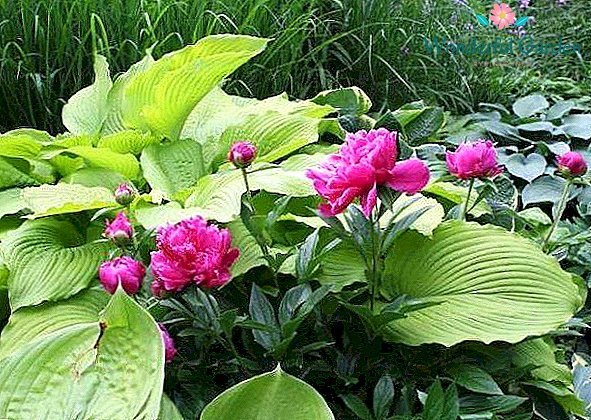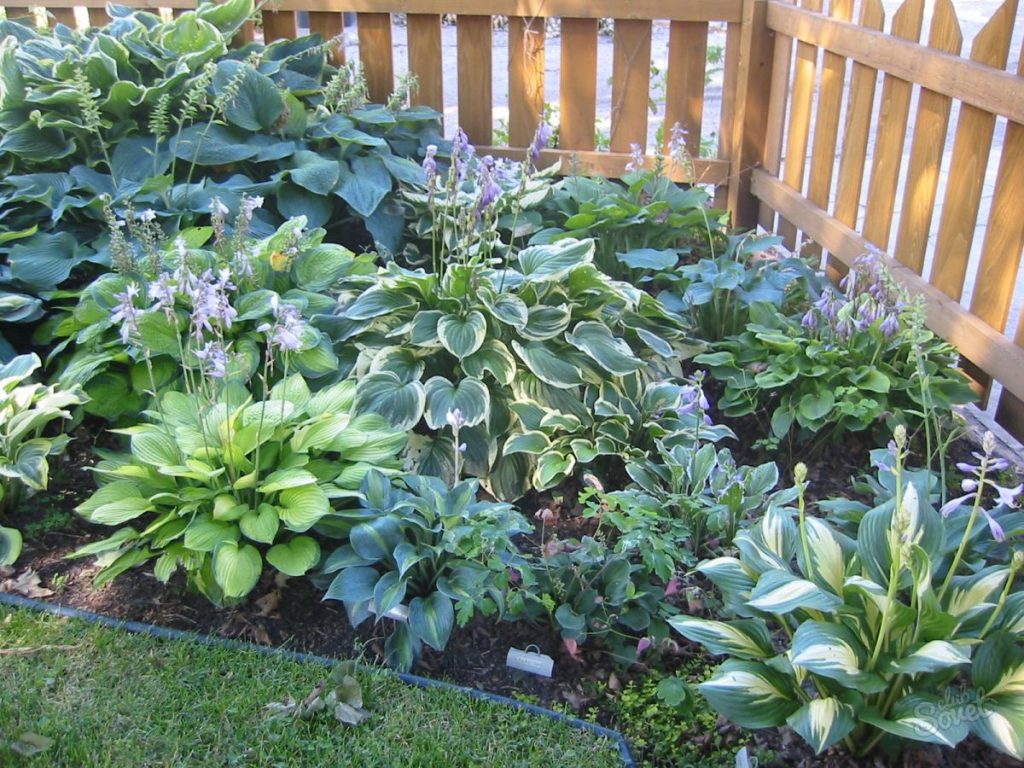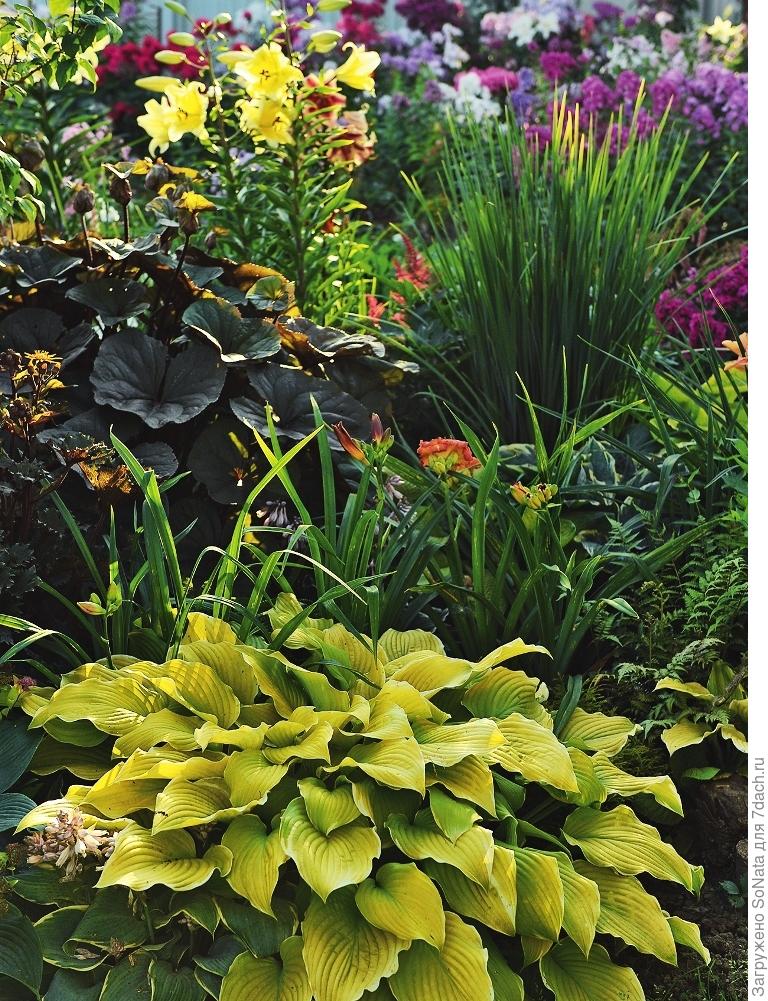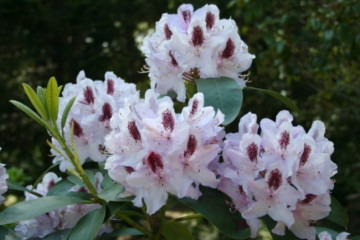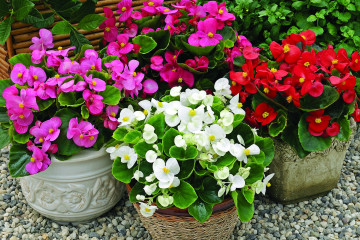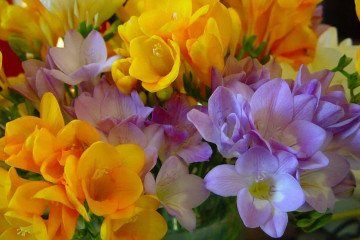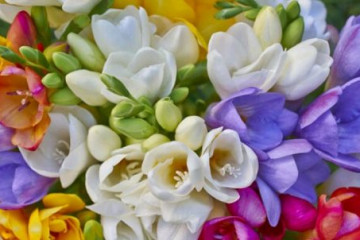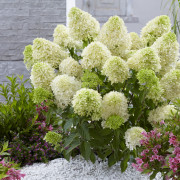Garden Hosts - Landscape Tricks
Content:
A well-kept garden and front façade is the dream of many gardeners. To do it, you need to start with landscaping. The most popular used for decorating not only personal plots, but also park areas are hosts. These ornamental herbaceous perennials are so popular and irreplaceable that without them it is impossible to imagine a single nook in the garden.
Khosta used to be called funkia, the places of its main growth were China, Korea, the Far East. The variety of herbaceous perennials includes more than 60 hosta species; it is known in all corners of the world. Why is it attractive? Leaves and their color are the main decoration of the hosta. In the garden, landscape tricks of designers are manifested in its harmonious neighborhood with many flowering plants and tall cereals.
There are many types of hosts. Even classic perennial bushes with green leaves are not the same. Drawings on them have dark and light colors. Borders, stripes, white streaks in various variations create unique combinations on the leaves, changing the appearance of the plant.
How to plant hosts beautifully
The most unpretentious of the plants that are planted in a personal plot or in a garden is considered a hosta. It grows even in the most shaded areas. Many of its varieties feel great both in sunlit areas and in the corners of the garden with diffused but bright light.
Florists recommend that you determine the best place to place your hosta by planting it in different parts of the garden. Next year, it will become clear in which of the selected areas the plant feels better. This can be determined by the color of the foliage. Then you can transplant the grown bush to the chosen place. A perennial is unpretentious in care and perceives a change in habitat painlessly. If necessary, the host can be grown in a container for the purpose of landscaping balconies and terraces.
The plantings of this herbaceous plant look beautiful in the design of the carpet. Its large leaves do not allow weeds to grow in the garden. In this case, carpet is considered not only decorative, but also useful.
What to plant next to hosts
What is hosta in a flower bed combined with? These ornamental plants get along well with all flowers, so the question of what to plant next to the host does not arise. Previously, this perennial plant was rarely found in flower gardens and flower beds. He was considered something special among the familiar plants and flowers. Modern varieties decorate flower beds and paths. Look great surrounded by roses, peonies, hydrangeas, irises. Nice tandem hosts in a flowerbed with geraniums. These plants are the decoration of any flower garden: from a ceremonial composition to a shady corner in a landscape style.
These attractive flower bed plants can enhance the attractiveness of nearby flowers. Large ornamented hosta leaves soften, soothe, balance plants of various natures, enhance the beauty of their neighbors, namely:
- Flowerbeds with daylilies and hosta. Low-growing species of daylily are grown on the personal plot. They mainly make out flower beds that look like alpine hills. At the forefront of the composition, florists recommend planting hosts with beautiful foliage.Depending on what design is performed for the alpine slide, they select a scheme for planting bushes, alternating them with daylilies, which are suitable for any soil and diffused lighting.
- A flower bed with phloxes, geyhers and hosts. A skilful combination of Heuchera and Hosta with an attention-grabbing variation in the shades of one and the other flower transforms the site, be it a flower bed, lawn or alpine slide, and attracts attention. Both flowers are unpretentious to care for, resistant to disease, frost and dry weather. Garden corners decorated with Heuchera and Hosta are a real highlight of the design. On a semi-shaded area of the garden, perennial phloxes will look like a bright spot, blooming almost all summer until mid-autumn. Dry summers, like winter frosts, are not as sensitive to phlox.
Hosta in landscape design
Designers use a variety of hostas in their compositions. They are attractive because they tolerate low temperatures well, are frost-resistant, which means they are a perennial decoration. These perennials are subdivided into varieties with an original glossy, waxy and matte leaf finish. There are varieties with very large leaves, these ornamental plants are also found with small leaves. The type of leaf is also varied. Its structure is smooth, embossed, wrinkled and wavy leaves.
It all depends on the height of the herbaceous perennials. Ground covers - have a height of up to 20 cm, curbs - from 20 to 30 cm, medium-sized - 30-45 cm and high - from 45 to 80 cm. With the help of them, using optical illusion, you can revive the darkest corners of the garden, creating multi-tiered compositions.
Thanks to the beauty of the leaves, herbaceous bushes are not only a decoration for gardens. Leaves are used to create original bouquets. This large-leaved plant looks beautiful both growing alone and in monogroups, creating complex compositions from different varieties. Landscape designers use hosts:
- when creating flower beds;
- as a curb plant, decorating the front edge of the composition;
- in freely growing groups;
- in rockeries;
- like tapeworm or large spots on the lawn;
- in the design of regular mixborders and flower beds;
- in rock gardens and Japanese-style gardens;
- in the creation of small decorative ponds,
- in a breakdown of flower beds into sectors;
- in the form of a carpet or a green "pillow".
Flower garden or flower bed with hosts
A herbaceous shrub will not get lost in a bright flower garden. The plant creates interesting compositions in multi-colored flower beds, the originality of which gets its portion of admiration. Flower gardens fenced with green border look more attractive, especially when the host participates in the design of the flower borders. With the help of designers, you can choose the right varieties with different colors of the sheets and their arrangement in the border. This will be the key to the beauty and uniqueness of the flower garden.
Hosta curb
Border plants are involved in creating the landscape near the house on the personal plot. They separate decorative and functional areas. Hosta is considered a wonderful plant often used to create a green border. Designers suggest composing compositions of at least three of its types with different heights, planting along the paths. The main thing is the compatibility of the selected varieties of this perennial plant in shape and color, thereby obtaining a unique pattern. Border varieties include miniature Blue Cadet plants with blue leaves or Light Up.
When creating a beautiful and durable garden design, you should listen to the advice of landscape designers regarding the choice of a planting site, lighting, and the neighborhood of plants.
Video

